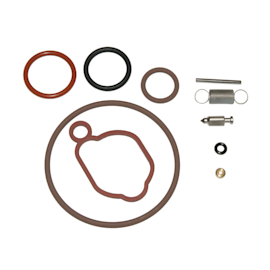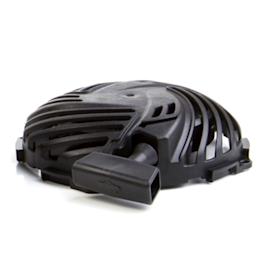- Kenmore refrigerator water filters
- Whirlpool refrigerator water filters
- Samsung refrigerator water filters
- GE refrigerator water filters
- LG refrigerator water filters
- Frigidaire refrigerator water filters
- KitchenAid refrigerator water filters
- Maytag refrigerator water filters
- Kenmore Elite refrigerator water filters
- Estate refrigerator water filters
- GE Profile refrigerator water filters
- Amana refrigerator water filters
- Bosch refrigerator water filters
- Dacor refrigerator water filters
- Electrolux refrigerator water filters
Can’t find your part? Contact us: +1-309-603-4777
Top DIY repair help
View All Repair Categories
Appliances
Lawn & Garden
Power Tools
Home Improvement
Sports & Leisure
Heating & Cooling
OrdersSchedule a repair
Keep track of the models you own in your profile
Sign in or Register to view or add models
How to measure a mower blade

Your lawn mower blade is looking worse for wear—maybe it’s dull, bent, or just plain done. Time for a replacement, right? The easiest way to find the right blade is by using your mower’s model number. But what if the model tag is missing—like when you’ve inherited a hand-me-down mower or scored a great deal from a garage sale?
That’s where measuring comes in. Good news: it’s easy. You don’t need fancy tools or an engineering degree. Just a tape measure, a few minutes, and this guide.
Why it matters: What blade does my lawn mower use?
Grabbing a "close enough" blade off the shelf might seem fine, but the wrong size can lead to poor cutting performance—or even damage your mower. A mismatched blade could hit the deck, rattle loose, or just make your lawn look uneven.
If you've lost the manual (or never had one), the blade size won’t be listed on the mower itself—but you can still figure it out. The key measurements you'll need are:
Blade length
Center hole type and diameter
Blade width (optional but helpful)
Once you've got those details, you can match them to the correct replacement blade for your mower.
How to measure a mower blade
Here's what to grab before you start:
Tape measure or ruler
A flat, stable surface
Work gloves (because blades are, well... sharp)
Your current mower blade (removed from the mower)
Tip: Make sure the blade is clean and straight—bends or warping can throw off your measurements.
Step 1: Remove the blade
Unplug your mower or disconnect the spark plug wire (safety first!). Flip the mower on its side and use a blade removal tool or wrench to remove the blade bolt. Wear gloves—it might be greasy or sharp.
Step 2: Measure the blade length
Lay the blade flat and measure diagonally from the tip of one cutting edge to the tip of the other. This is the full length.
Note: Blade length is typically a little smaller than the mower deck size. For example, a 22-inch mower may use a 21-inch blade. Riding mowers may use blades of different lengths depending on deck size and how many blades it uses—so always measure each blade individually.
Important: Don’t measure straight across the center—that’ll give you a shorter and incorrect length.
Step 3: Measure the center hole
Check the center of the blade. Is it a round hole, a star shape, or something else?
Round hole – Measure the diameter in inches or millimeters
5-point or 6-point star – Count the points and match to your new blade
H-pattern or bow tie – Unique to some manufacturers; shape must match exactly
Matching the hole type is critical—if it doesn’t match your mower spindle, the blade won’t fit (or worse, could fly loose).
Step 4: Measure blade width and thickness (optional)
Not always required, but helpful:
Measure the width at the widest part
Thickness is usually standard, but if your blade looks unusually slim or heavy-duty, take note
Types of mower blades
When shopping for a replacement, you’ll see different blade styles. They’re not all interchangeable—choose the one that matches your mower’s design and how you want to cut. For a deeper look, check out our video guides to types of riding mower blades and types of walk-behind mower blades.
Standard blades (lift blades)
Common for side-discharge mowers
Straight or slightly curved edges
Great for regular mowing and bagging
Mulching blades
Curved, with extra cutting edges
Chop clippings into fine mulch
Ideal if you leave grass clippings on your lawn
High-lift blades
Steeper blade angle
Create more suction for bagging
Not great for sandy or dusty lawns
Using your model number (if you have it)
Without a doubt, using your model is the easiest way to find the correct blade. If you know your mower’s model number (usually found on a tag under the deck, near the engine, or under the seat), you can look up compatible blades directly. You can also search by part number if you're replacing the original OEM blade.
But if that model tag is worn out or missing, don’t worry—you can still measure the blade and find a match.
Need help finding the right fit? We’ve got a full collection of lawn mower blades that are easy to browse through.
Where to find your mower’s model number
Walk-behind mowers:
Check the top or side of the mower deck, near the rear wheels, or on the engine housing.
Riding mowers:
Look under the seat, near the rear wheels, or on the mower deck. Some models also place the tag near the engine or battery tray.
The model number usually includes a mix of letters and numbers and may appear next to the brand or serial number.
Extra tips: safety and when to replace your blade
Measuring your blade correctly is important, but so is staying safe while doing it—and knowing when it’s time to stop measuring and just replace the thing. Here are a few practical tips to help you handle the job safely and recognize when your blade has reached the end of the line.
Safety tips when measuring or replacing a blade
Before you dive into removing or inspecting your blade, make sure you're not setting yourself up for scraped knuckles or worse. A few quick safety steps can go a long way.
Always disconnect the spark plug wire or unplug the mower before removing the blade
Wear work gloves to avoid cuts
Tighten the blade securely when reinstalling
Replace any blade that’s bent, chipped, or cracked
Also, take a moment to check the rest of your mower—especially the deck and drive system. A new blade won’t help much if the rest of the mower’s in rough shape.
When to replace your blade
Wondering if it’s time for a new one? Here are some signs:
Blade is visibly chipped or bent
Grass looks ragged or torn after mowing
Mower vibrates more than usual
You’ve already sharpened the blade a few times
Most blades need replacing every 1–3 seasons, depending on how often you mow and what kind of terrain you’re dealing with.
Final thoughts
Knowing how to measure a blade doesn’t take long, and it can save you from the frustration of ordering the wrong part. Whether you’re replacing a mulching blade or just refreshing your regular mower setup, a few simple measurements can make a big difference in performance.
Ready to track down the right blade? We’ve got everything you need—from replacement blades and maintenance parts to step-by-step mower repair help—to help you get the job done and keep your lawn looking its best.
Was this information helpful?
Symptoms for gas walk-behind mowers
Choose a symptom to see related walk-behind mower repairs.
Main causes: damaged cutting blade, loose cutting blade, damaged flywheel key, engine needs tune up…
Main causes: uneven wheel height settings, damaged wheel, dull or damaged cutting blade…
Main causes: engine needs tune up, dirty or clogged carburetor, damaged flywheel key…
Main causes: drive control cable failure, worn or broken drive belt, bad transmission, broken drive wheel…
Main causes: stale gas, engine needs tune up, bad spark plug, dead battery, bad recoil starter, faulty safety switch, ba…
Main causes: dirty carburetor, bad spark plug, clogged air filter, engine choke problems, clogged gas cap vent…
Repair guides for gas walk-behind mowers
These step-by-step repair guides will help you safely fix what’s broken on your walk-behind lawn mower.

How to rebuild a lawn mower carburetor
The carburetor mixes air with fuel to drive the piston. Rebuild the carburetor if it's clogged or leaks.…
Repair difficulty
Time required
60 minutes or less

How to replace a lawn mower recoil starter on an OHV engine
Replace the recoil starter if it doesn't move when you pull the starter rope.…
Repair difficulty
Time required
15 minutes or less

How to replace a lawn mower wheel
Learn how replace a damaged wheel on a walk-behind lawn mower—it's a quick, easy fix.…
Repair difficulty
Time required
15 minutes or less
Articles and videos for gas walk-behind mowers
Use the advice and tips in these articles and videos to get the most out of your walk-behind lawn mower.

Do these 5 things this spring for a lawn that's healthier all summer.…

Learn about all the convenient features on our Sears PartsDirect website that make your parts purchases easier.…

Get answers to frequently asked questions about Sears and Sears PartsDirect.…